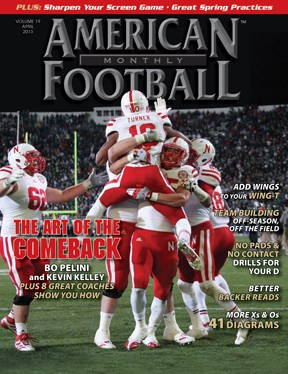Article CategoriesAFM Magazine
|
Managing Your Program – Spring Practice: Make it About the Details and Developmentby: Keith GrabowskiOffensive Coordinator Baldwin-Wallace College © More from this issue As we head into spring practice, now is the time to set a focus that will carry the team into strong summer preparations and camp, eventually leading up to the 2013 season. For many areas in the country, a spring game against an opponent is not part of the equation. This is a time that will end in an inter-squad game, or for some, no game or scrimmage at all. This is true at the NCAA Division III level, where we cannot even put on pads. However, this is still a great time to make progress and set up positive habits in the approach to how we practice. Even the teams that are allowed to play an opponent have several weeks until that happens, so the week-to-week crunch and grind of the season is not quite the same. Without that opponent looming at the end of a week, the enemy is complacency. Even with the limitations we have at ....The full article can only be seen by subscribers.
|
|
|||||||
| HOME |
MAGAZINE |
SUBSCRIBE | ONLINE COLUMNISTS | COACHING VIDEOS |
Copyright 2025, AmericanFootballMonthly.com
All Rights Reserved





